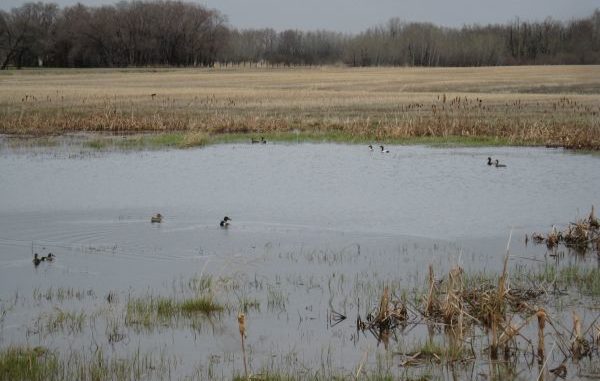
LDWF’s waterfowl study leader recently returned from auditing DU’s efforts to develop Canadian wetlands
On a recent auditing trip to monitor Ducks Unlimited’s efforts to restore wetlands in Saskatchewan, Louisiana’s waterfowl study leader was encouraged by both the number of birds and the habitat conditions he witnessed firsthand.
Larry Reynolds, with the Louisiana Department of Wildlife and Fisheries, made the trip as part of the state’s current three-year contract with DU.
The conservation organization currently receives 10 percent of the state’s basic hunting license fees, or about $300,000 annually, to develop and preserve breeding grounds, and Reynolds makes a trip to Canada during the contract period to monitor their efforts.
The state money contributed to DU-Canada is matched by DU, Inc., resulting in about$600,000. By working on projects in Canada, Reynolds said that amount is then matched by the North American Wetlands Conservation Act, resulting in about $1.2 million for the projects annually.
“I can tell you that on that part of the breeding grounds, which is where Louisiana-hunter money is being used, the wetland conditions are excellent,” Reynolds said. “It may be even a little too wet in some places because some of the wetland basins are so deep that a lot of the emergent vegetation that the broods use to hide is kind of flooded out.
“But those water levels are going to drop from now through July. That’s pretty normal. Those basins lose a foot to a foot-and-a-half of water, so they may be in better shape to hide broods later on in the season.”
Much of DU’s focus in southern Saskatchewan is converting grain to grass, and plugging ditches that had been created to drain wetlands, Reynolds said.
“They’re taking agricultural fields that were growing canola or wheat or barley and converting it to grass cover which cattle will use,” he said. “They’re restoring the wetlands. And it happens pretty quickly — it just takes a year or two.”
Reynolds said he saw virtually every species of duck during his visit, but blue-winged teal were by far the most common.
“Every place that we went that held water, there were a pair or two of blue-winged teal,” he said. “Mallards and blue-winged teal were the most abundant. After that, gadwall, pintails, redheads, scaup, canvasbacks, ruddy ducks and widgeon.
“But I would say with pretty good confidence that 19 out of 20 wetlands that we passed had a pair of blue-wings on them.”
DU’s efforts in converting grain to grass are important because of the nesting habits of many ducks, especially blue-winged teal and gadwall that are so popular with Louisiana hunters, he said.
“Almost all of these ducks are ground-nesting ducks and their nests are out in the field, it’s not even in marshy grass,” he said. “They’ll be as far as a mile away from a pond.
“That’s why this is so important because those ducks are out in the field away from the ponds in thicker clumps of grass laying eggs.”
For up-to-date information on breeding conditions and aerial surveys throughout the flyway, visit www.flyways.us.


